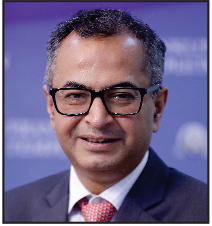
Rahul Goswami, CIO - Fixed Income

India's economic momentum remains strong, underscored by a surge in manufacturing activity. In June 2025, the Manufacturing Purchasing Managers' Index (PMI) climbed to a 14-month high of 58.4, driven by robust growth in output, new orders, and job creation. Complementing this expansion, the Reserve Bank of India enacted a 50-bps (0.5%) rate cut and shifted its policy stance from accommodative to neutral, signalling a cautious approach to future monetary easing. Despite the shift, liquidity remains ample, with the RBI actively managing short-term rates through instruments like the Variable Rate Reverse Repo (VRRR)/ Variable Rate Repo (VRR).
The bond market reacted to the RBI's stance change, with yields rising across corporate and government securities. Long-duration funds underperformed in June 2025 on a one-month basis. The money market curve steepened, and CD spreads remain attractive, though supply dynamics could influence future movements.
India's fiscal position remained stable, with the FY25 fiscal deficit contained at 4.8% of GDP and revenue deficit improving, supported by strong tax collections and disciplined spending. Government's Capital expenditure surged by 54% Y-o-Y in April-May period of 2025-26 (FY 26), compared to last year when capex was subdued due to elections.
Global volatility may persist due to ongoing tariff negotiations and geopolitical risks; however, India remains well-positioned to weather these challenges. Its strong macroeconomic fundamentals provide a solid foundation, which could allow the country to maintain resilience and stability amid global headwinds.
Our fixed income funds are positioned optimally in terms of duration within the respective fund mandate.
Source: Bloomberg, RBI, MOSPI
The sector/stocks/securities mentioned in the material may not be considered as investment advice or recommendation to buy or sell nor a view or opinion on quality or profitability providing a basis of investment decision in the same. The sector/security mentioned herein are for general assesment purpose only and not a complete disclosure of every material fact. It should not be construed as investment advice to any party. The sector/stocks may or may not be part of our portfolio/strategy/ schemes. The schemes managed by Franklin Templeton Asset Management (India) Pvt. Ltd (the AMC) may or may not have any future exposure in the same. The reader should not assume that investment in the sector/stocks/securities mentioned was or will be profitable.